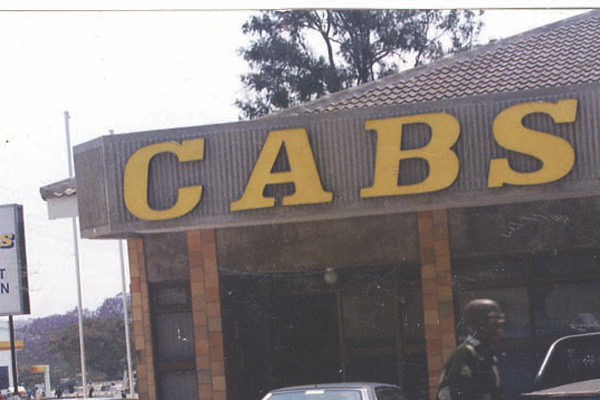
Banks are venturing into the small-to-medium enterprises (SMEs) sector to get a share of the $7,4 billion estimated to be circulating in the informal sector.
BY TATIRA ZWINOIRA
SMEs now constitute the bulk of the informal sector and a 2012 Finscope Survey says the SMEs had an estimated turnover of $7,4 billion circulating within that sector.
The rush into developing strategies to lure SMEs comes as the country is going through a severe liquidity crisis as exports have not performed according to expectations, with imports ballooning. In addition, deposits have been short term in nature and hence cannot be lent on long-term basis.
CABS managing director Simon Hammond said there was a lot of money circulating in the SME sector, which was why the bank “has been working on strategies to tap into this space”.
“We have developed safe and ring-fenced lending and access models for this sector. We have been able to penetrate some pockets where economic activity can be stimulated,” Hammond said.
“In these pockets, we have been able to play our role in a significant way. More work is still underway as we replicate these models in more areas.”

- Chamisa under fire over US$120K donation
- Mavhunga puts DeMbare into Chibuku quarterfinals
- Pension funds bet on Cabora Bassa oilfields
- Councils defy govt fire tender directive
Keep Reading
He said CABS was creating SME access productivity and lending models which appealed mostly to value chain players of large corporates, particularly those that were in the productive sectors such as agriculture.
He said “this helps to increase economic productivity as well as poverty alleviation”.
CABS is expecting transactional income, as well as interest earnings to increase as they grow the SME sector portfolio.
CABS is a member of the Old Mutual Group.
ZB Financial Holdings (ZBFH) said it had approved loans amounting to $18, 9 million, of which $11, 3 million had been taken up to date.
“Following dollarisation of the economy, the SME sector is growing as most Zimbabweans are becoming business owners. It is critical that we do not ignore this reality in our business strategy formulations,” said Shadowsight Chiganze, ZBFH head of corporate services
“For ZB, we have always supported the SME sector as well as the informal market in a big way, as noted by our presence in areas such as High Glen, Siya-So Mbare and Gazaland.”
He said SMEs were significant depositors and borrowers which provided both transactional fee income streams, as well as net interest margins.
“Significant transaction volumes conducted on a daily basis in the SMEs sector are conducted on a cash basis. Our role is to provide appropriate technologies that are inclusive and make it easier, convenient and faster,” Chiganze said.
The focus to include the SME sector into the formal economy comes from the non-existent formal sector. Ashok Chakravarti, senior advisor in the USAID strategic economic research and analysis programme, recently said the growth in the informal sector was due to the “dead manufacturing sector”.
FBC Bank said they were working on strategies to get a contribution to their finances from the SME sector.
Executive director for Retail Banking and e-Commerce, Agrippa Mugwagwa said the bank’s lending to the SME would be more than the threshold set by the Reserve Bank of Zimbabwe.
RBZ says SMEs’ lending should constitute 30% of each banking institution’s loan book.
He said the revenue growth would also be guided by the thrust outlined above.
“Our strategies entail regular engagement with existing and new SME clients, development of relevant products and services and advisory support. We are also working with all key stakeholders like government departments, regulators and financiers to ensure sustained growth and development of the sector,” Mugwagwa said.
In his mid-term monetary policy statement, RBZ governor John Mangudya ordered banks to submit three-year board approved financial inclusion plans by December 31.
The plans are expected to help formalise the SME sector and bring in the cash circulating within that sector into the formal channels.
In addition, RBZ will require new applications for banking licences to be accompanied by credible financial inclusion plans as part of the licensing criteria.
However, one major challenge for banks is instilling confidence among SMEs, who no longer trust banks following a number of bank failures.
Six banks — Allied, Trust, AfrAsia, Capital, Interfin and Royal —have closed since 2009.
The inclusion of the SME sector into the financial plans of banks will also be backed by the Ministry of Small and Medium Enterprises and Cooperative Development which will embark on a five pillar model to grow the sector.
The model will focus on enabling a regulatory environment, building business support and access to finance, markets, entrepreneurship and management skill development, and access to technology and infrastructure.
CBZ Bank incorporates SMEs under its functional unit within the Corporate and Merchant Banking Division of the Bank. The unit specialises in offering financial support to sole proprietors and registered business companies in Zimbabwe.
For an SME to access funding, one should have an asset base of between $10 000 to $2 million and employ between five to 75 people. One should have an annual turnover of between $60 000 to $5 million and capital requirement of $5 000 to $300 000.
According to the Finscope survey of 2012, there are 2,8 million Micro, Small and Medium Enterprises (MSME) owners, owning 3,5 million MSMEs and employing 2,9 million people.










